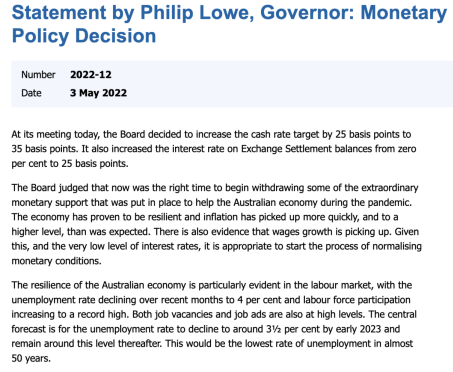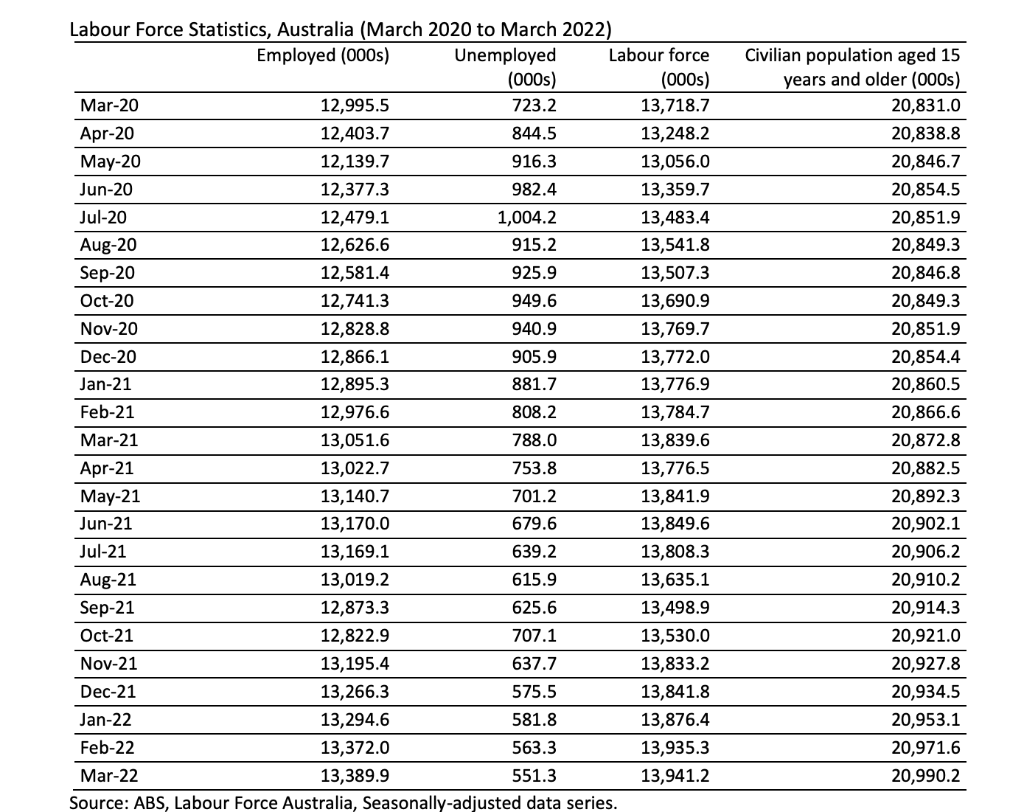Question
2) Monetary policy and financial stability The Treasury has been paying close attention to the policy actions taken by Australias central bank, the Reserve Bank
2) Monetary policy and financial stability
The Treasury has been paying close attention to the policy actions taken by Australias central bank, the Reserve Bank of Australia (RBA), which also plays an important role in managing the Australian economy.
a) For your Policy Brief, you have been asked to write some background information on the role of monetary policy in managing the economy.
Explain the difference between expansionary monetary policy and contractionary monetary policy? As part of your explanation, identify the conditions in which a central bank would implement expansionary monetary policy and the conditionsin which it would implement contractionary monetary policy? In your answer, refer to the macroeconomic objectives that the RBA is responsible for in its charter. (3-4 sentences)
b) Based on the most recent announcement made by the RBA Governor (see the RBA Monetary Policy Decision for May 2022 below), identify what type of monetary policy did the RBA implement in its most recent announcement? Which part of the AD-AS model is this policy aiming to shift? What does the RBAs decision tell us about which phase of the business cycle we are currently in, and which economic indicator the RBA is most concerned about? (3-4 sentences)
(See Statement by RBA Governor on the latest Monetary Policy Decision below)

c) In its announcement, the RBA Governor stated The Board is committed to doing what is necessary to ensure that inflation in Australia returns to target over time.
As part of your Policy Brief, explain what is meant by the inflation target and how does an inflation target contribute to good economic management? Based on the news updates that we discussed in our lectures and tutorials throughout this course, what are some factors that are currently contributing to inflationary pressures in Australia and globally, and which part of the AD-AS model are they mostly affecting? (2-3 sentences)
d) The following table provides labour market data from the Australian Bureau of Statistics(ABS). 
At the start of the pandemic, job losses and rising unemployment across the economy were a concern for both the RBA and Treasury. Your colleague has calculated that the pre pandemic unemployment rate (in March 2020) was 5.3%. Using the data in the table, how high did Australias unemployment rate reach throughout the worse of the pandemic and in which month did this occur?
To support your calculations, include all your working and the formulas you applied to compute the unemployment rate. For this labour market data, round off your answers to 2 decimal points. When you obtain your answers, write a clear sentence that addresses the specific questions that have been asked. When looking the unemployment rate, what other important labour force indicator would you recommend also looking at to more fully understand the impact of the pandemic on the economy?
e) A new colleague working with you on the unemployment statistics for this Policy Brief and is feeling a bit puzzled by the labour market data. They tell you: I dont understand how sometimes the number of people in employment goes down at the same time that the unemployment also goes down? For instance, between July 2021 and August 2021, the number of people in employment declined from 13,169,100 to 13,019,200, but the unemployment rate didnt go down it fell from 4.63% to 4.52%. If there are around 150,000 fewer people in jobs, shouldnt the unemployment rate go up? How is this possible? Firstly verify whether your colleague is correct when they say that the unemployment rate fell between July 2021 and August 2021. Then, help your colleague understand how it is possible for the unemployment rate to fall even though the number of people with jobs also fell. Explain what other economic indicator needs to be monitored, and provide your calculation of the changes in this other indicator that occurred between July 2021 and August 2021. To support your calculations, include all your working and the formulas you applied to compute these labour market statistics. Round off your answers to 2 decimal points. When you obtain your answers, write a clear sentence that addresses the specific questions that have been asked.
Statement by Philip Lowe, Governor: Monetary Policy Decision Number 2022-12 Date 3 May 2022 At its meeting today, the Board decided to increase the cash rate target by 25 basis points to 35 basis points. It also increased the interest rate on Exchange Settlement balances from zero per cent to 25 basis points. The Board judged that now was the right time to begin withdrawing some of the extraordinary monetary support that was put in place to help the Australian economy during the pandemic. The economy has proven to be resilient and inflation has picked up more quickly, and to a higher level, than was expected. There is also evidence that wages growth is picking up. Given this, and the very low level of interest rates, it is appropriate to start the process of normalising monetary conditions. The resilience of the Australian economy is particularly evident in the labour market, with the unemployment rate declining over recent months to 4 per cent and labour force participation increasing to a record high. Both job vacancies and job ads are also at high levels. The central forecast is for the unemployment rate to decline to around 3 per cent by early 2023 and remain around this level thereafter. This would be the lowest rate of unemployment in almost 50 years. Labour Force Statistics, Australia (March 2020 to March 2022) Employed (000s) Unemployed (000s) Mar-20 12,995.5 723.2 Apr-20 12,403.7 844.5 May-20 12,139.7 916.3 Jun-20 12,377.3 982.4 Jul-20 12,479.1 1,004.2 Aug-20 12,626.6 915.2 Sep-20 12,581.4 925.9 Oct-20 12,741.3 949.6 Nov-20 12,828.8 940.9 Dec-20 12,866.1 905.9 Jan-21 12,895.3 881.7 Feb-21 12,976.6 808.2 Mar-21 13,051.6 788.0 Apr-21 13,022.7 753.8 May-21 13,140.7 701.2 Jun-21 13,170.0 679.6 Jul-21 13,169.1 639.2 Aug-21 13,019.2 615.9 Sep-21 12,873.3 625.6 Oct-21 12,822.9 707.1 Nov-21 13,195.4 637.7 Dec-21 13,266.3 575.5 Jan-22 13,294.6 581.8 Feb-22 13,372.0 563.3 Mar-22 13,389.9 551.3 Source: ABS, Labour Force Australia, Seasonally-adjusted data series. Labour force (000s) 13,718.7 13,248.2 13,056.0 13,359.7 13,483.4 13,541.8 13,507.3 13,690.9 13,769.7 13,772.0 13,776.9 13,784.7 13,839.6 13,776.5 13,841.9 13,849.6 13,808.3 13,635.1 13,498.9 13,530.0 13,833.2 13,841.8 13,876.4 13,935.3 13,941.2 Civilian population aged 15 years and older (000s) 20,831.0 20,838.8 20,846.7 20,854.5 20,851.9 20,849.3 20,846.8 20,849.3 20,851.9 20,854.4 20,860.5 20,866.6 20,872.8 20,882.5 20,892.3 20,902.1 20,906.2 20,910.2 20,914.3 20,921.0 20,927.8 20,934.5 20,953.1 20,971.6 20,990.2 Statement by Philip Lowe, Governor: Monetary Policy Decision Number 2022-12 Date 3 May 2022 At its meeting today, the Board decided to increase the cash rate target by 25 basis points to 35 basis points. It also increased the interest rate on Exchange Settlement balances from zero per cent to 25 basis points. The Board judged that now was the right time to begin withdrawing some of the extraordinary monetary support that was put in place to help the Australian economy during the pandemic. The economy has proven to be resilient and inflation has picked up more quickly, and to a higher level, than was expected. There is also evidence that wages growth is picking up. Given this, and the very low level of interest rates, it is appropriate to start the process of normalising monetary conditions. The resilience of the Australian economy is particularly evident in the labour market, with the unemployment rate declining over recent months to 4 per cent and labour force participation increasing to a record high. Both job vacancies and job ads are also at high levels. The central forecast is for the unemployment rate to decline to around 3 per cent by early 2023 and remain around this level thereafter. This would be the lowest rate of unemployment in almost 50 years. Labour Force Statistics, Australia (March 2020 to March 2022) Employed (000s) Unemployed (000s) Mar-20 12,995.5 723.2 Apr-20 12,403.7 844.5 May-20 12,139.7 916.3 Jun-20 12,377.3 982.4 Jul-20 12,479.1 1,004.2 Aug-20 12,626.6 915.2 Sep-20 12,581.4 925.9 Oct-20 12,741.3 949.6 Nov-20 12,828.8 940.9 Dec-20 12,866.1 905.9 Jan-21 12,895.3 881.7 Feb-21 12,976.6 808.2 Mar-21 13,051.6 788.0 Apr-21 13,022.7 753.8 May-21 13,140.7 701.2 Jun-21 13,170.0 679.6 Jul-21 13,169.1 639.2 Aug-21 13,019.2 615.9 Sep-21 12,873.3 625.6 Oct-21 12,822.9 707.1 Nov-21 13,195.4 637.7 Dec-21 13,266.3 575.5 Jan-22 13,294.6 581.8 Feb-22 13,372.0 563.3 Mar-22 13,389.9 551.3 Source: ABS, Labour Force Australia, Seasonally-adjusted data series. Labour force (000s) 13,718.7 13,248.2 13,056.0 13,359.7 13,483.4 13,541.8 13,507.3 13,690.9 13,769.7 13,772.0 13,776.9 13,784.7 13,839.6 13,776.5 13,841.9 13,849.6 13,808.3 13,635.1 13,498.9 13,530.0 13,833.2 13,841.8 13,876.4 13,935.3 13,941.2 Civilian population aged 15 years and older (000s) 20,831.0 20,838.8 20,846.7 20,854.5 20,851.9 20,849.3 20,846.8 20,849.3 20,851.9 20,854.4 20,860.5 20,866.6 20,872.8 20,882.5 20,892.3 20,902.1 20,906.2 20,910.2 20,914.3 20,921.0 20,927.8 20,934.5 20,953.1 20,971.6 20,990.2Step by Step Solution
There are 3 Steps involved in it
Step: 1

Get Instant Access to Expert-Tailored Solutions
See step-by-step solutions with expert insights and AI powered tools for academic success
Step: 2

Step: 3

Ace Your Homework with AI
Get the answers you need in no time with our AI-driven, step-by-step assistance
Get Started


